An important new iteration of the robotic seeing eye dog was shown to the world this week, when Glasgow University showed off RoboGuide, an AI-powered quadruped for visually impaired people. The future for robotic canine assistants looks not just commercially huge, but also massively empowering for the world’s one-third of billion visually impaired people.
Replacing a real “seeing eye dog” with a robot guide dog might seem like a step backwards, particularly considering the life-affirming nature of the inter-species collaboration and the obvious emotional bond.
That’s until you realize that only one in every 15,000 visually impaired people has a service dog of any kind.
After a century of development, there are just 20,000 guide dogs on the planet … and 43 million blind people … plus another 295 million who are visually impaired enough that a guide dog would radically improve their existence.
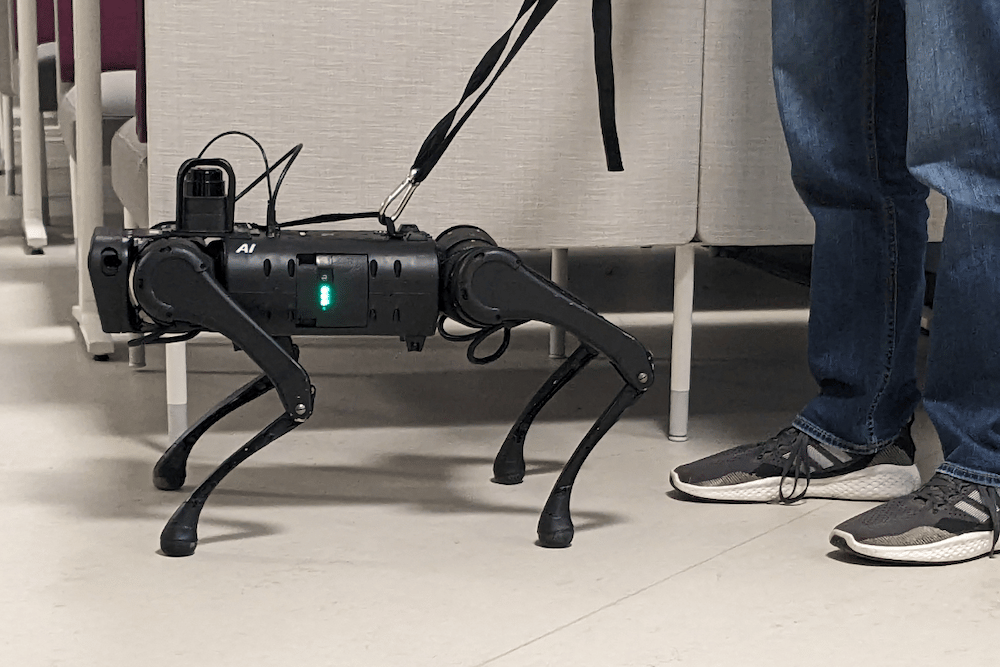
Stephen Folkerts ’24
That is a significant number – one third of a billion human beings – and it puts the need for low cost robotic assistants into the territory of a humanitarian cause because each one can give a human life-changing autonomy.
While robots are logical for use in delivery, construction, inspection, security, site monitoring, law enforcement and military where they can create much greater efficiency and lower costs, the need a blind person has for the coming generation of robotic assistant dog is far greater.
University of Glasgow Robot Dog RoboGuide system under development
Most importantly, in reducing the cost of a useful assistant from the US$50,000 for a trained dog, to below $2,000 which seems likely, there’s a formidable latent demand waiting to be met.
As ingenious as the guide dog is, all that training costs money (ballpark $50,000 a dog) and time (15-18 months) and the failure rate is around 50%, so it isn’t surprising that the system hasn’t scaled well enough to include the other 99.9% of less privileged humans who need one now. This is further compounded by the limited life expectancy of dogs. The average service life of a canine service dog is just five to seven years. Robots will have a life expectancy far greater than that, and can be repaired to brand new: canines and humans cannot.
Artificial Intelligence is one of the giant technological leaps that will enable the robotic dog to be considerably more useful very soon. AI means you will be able to converse intelligently with your robotic assistant in your native language. Over time, the human will grow accustomed to and eventually tweak this computer human interface to have the voice and personality they are most comfortable with and the specific memory of a lifetime of shared experiences together.
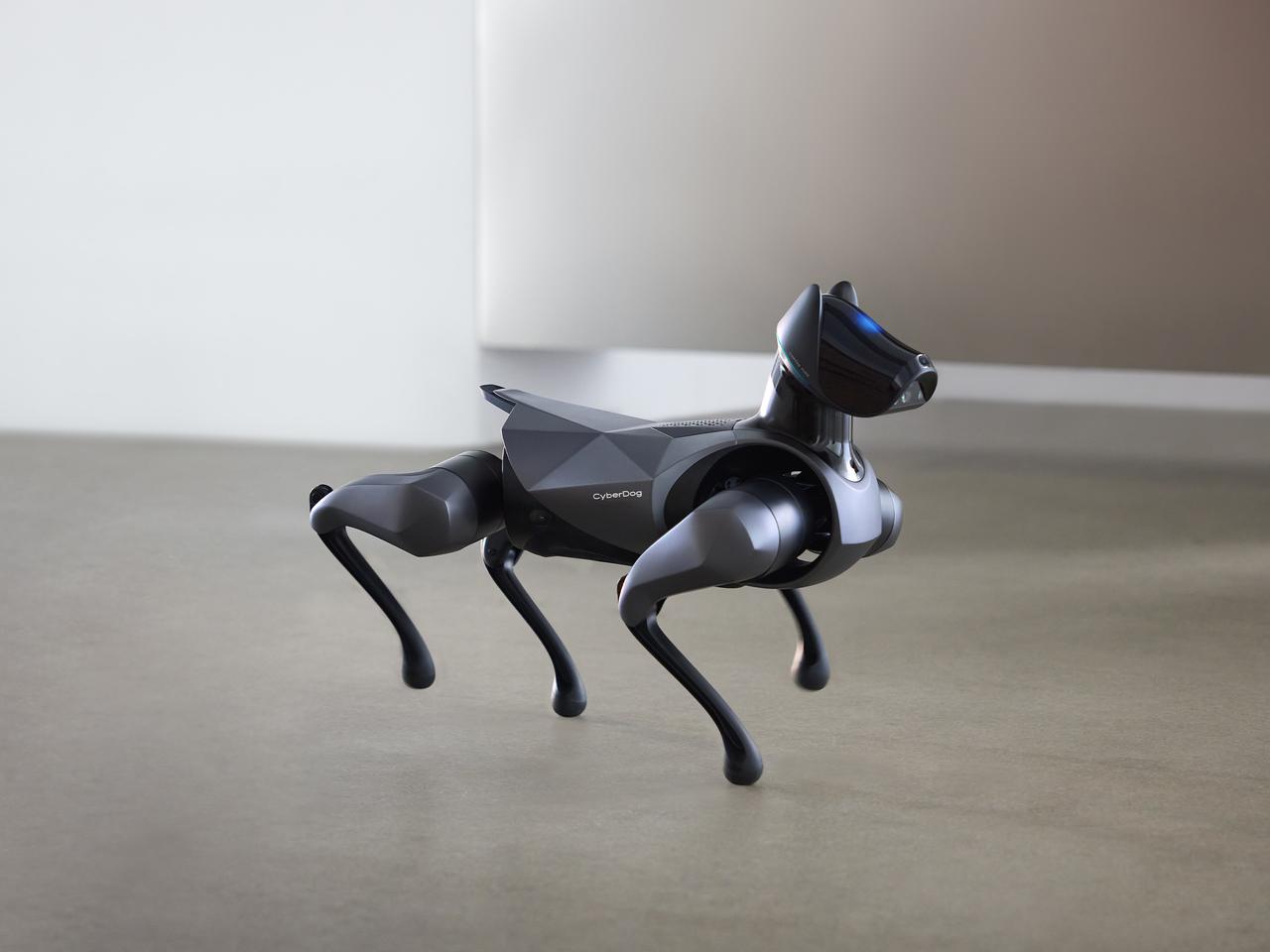
Xiaomi
If you should ever decide or need to upgrade or replace your robotic dog, it will remain exactly the same friend it was before, just with a new body. It might be a larger and more athletic version of the same form factor, with hot-swappable batteries for prolonged endurance outside home, or it might be a different form factor entirely.
It might stand upright using a Segway-style self-balancing base for a smaller footprint and hence easier maneuvering, or it might have a combination of legs and wheels to roll or skate on flat surfaces and to walk over uneven or unstable terrain – but it will not be a case of starting over from scratch as it is with a new guide flesh-and-blood canine.
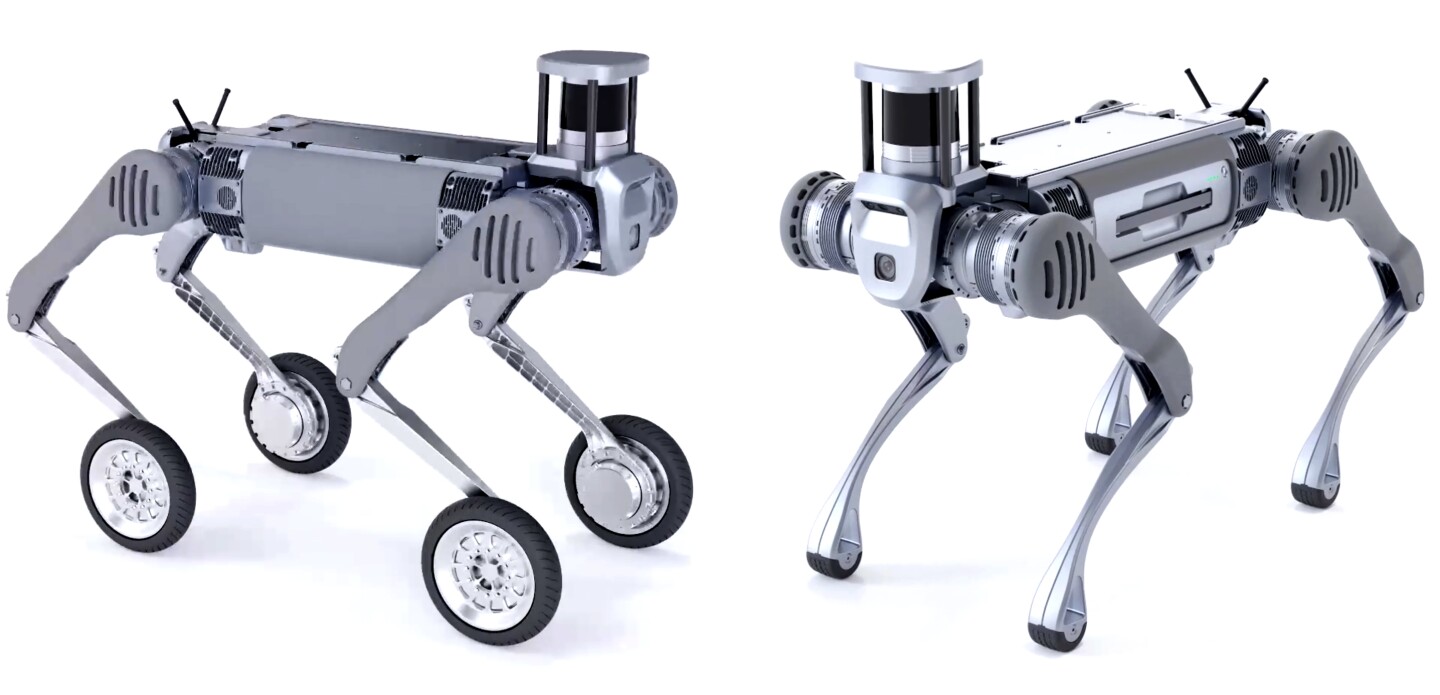
Unitree
This regular replacement cycle (the demise of one guide dog and the familiarization with the next) means regular emotionally-challenging disruption. The guide dog robot’s entire voice, personality and memory will be transferable. Your next robotic dog will have exactly the same personality and memory of conversations and shared events. The transition will be seamless. This might be very important for patients with Alzheimer’s and other forms of dementia, as a robot will become an attentive coach to slow the decline of the capacity to remember, think, or make decisions.
The robotic helper of the not-too-distant future will also offer an additional degree of safety given it has an array of cameras to capture (and stream) any scenario it witnesses, and the ability and intelligence to call for help with or without your instructions. Muggers need anonymity. Someone accompanied by a robot dog is not a soft target because the dog can document and broadcast the crime in high def.
When you are not endangered, it can converse with you, cherry pick the news for you and read it, describe your surroundings for you, or speak knowledgeably about anything … having the world’s recorded knowledge at its disposal makes for a knowledgeable companion.
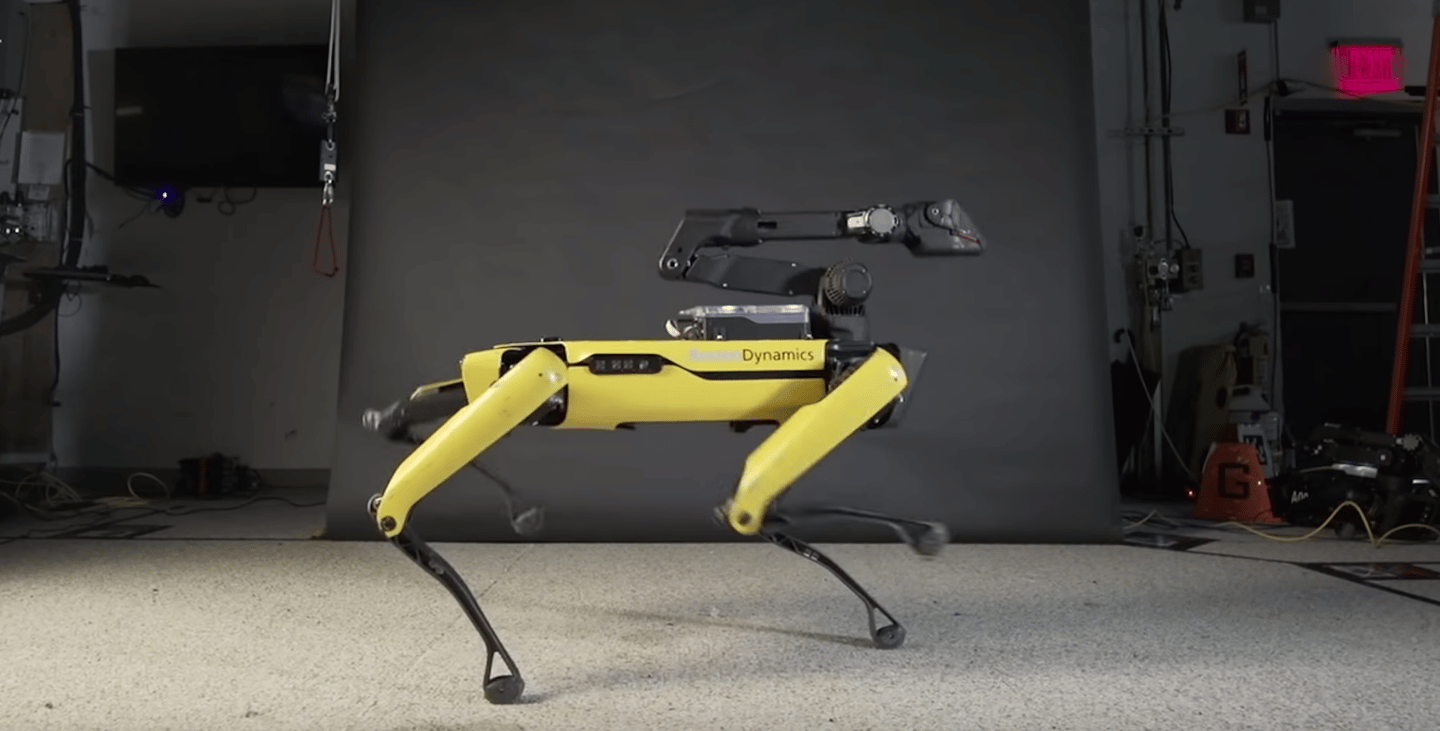
Boston Dynamics
Artificial intelligence already offers a charming companion for any mood, being an adventurous conversationalist or a passive agreeable one as the mood takes you. Most importantly, your companion can be a compassionate friend if the real thing isn’t available, which compensates to some degree for the loss of a heartbeat next to yours on the couch. Even then, having an assistance robot is not mutually exclusive with having a genuine canine too. Then your dog can return to being your best friend – its job description for the last 24,900 years.
The University of Glasgow’s research robot shown last week is intending to not only develop specific skills for assistance robots for the blind and partially sighted community, but also to repurpose those skills to give essentially the same robot a future as a general purpose guide for museums, shopping centers ad infinitum.
Yet another difference between V1.0 (the dog) and V2.0 (the robot) is in the amount of care the carer needs. Dog’s are not zero maintenance creatures. They require feeding (which is significantly more costly than electricity) and washing and brushing and like us all, they have waste products.

Unitree
The robotic dog requires almost no maintenance in comparison to dogs or humans, and if it does need anything, it will be able to tell you what the problem is, how much it will cost to fix and what the most expedient solution is. Unlike human beings who will always tell you they are fine, your robot will tell you when it’s due for a visit to the robot doctor, and it will self-charge autonomously.
As previously mentioned, there is something about the emotional and physical warmth of a service dog that makes it as much companion as assistant but not all of that important factor will be lost in the move to a robotic platform.
With the population of the world aging, and this phenomenon impacting some societies with older demographics more than others, work has been underway for decades in Japan to use robots to mitigate the issues likely to be faced by older adults. The Japanese Government has been encouraging development of solutions for elderly autonomy and care for decades (as this 15-year-old story I wrote while attending the International Robotics Expo in Tokyo explains), and a lot of Japan’s world-leading robotics R&D technology is being directed accordingly.
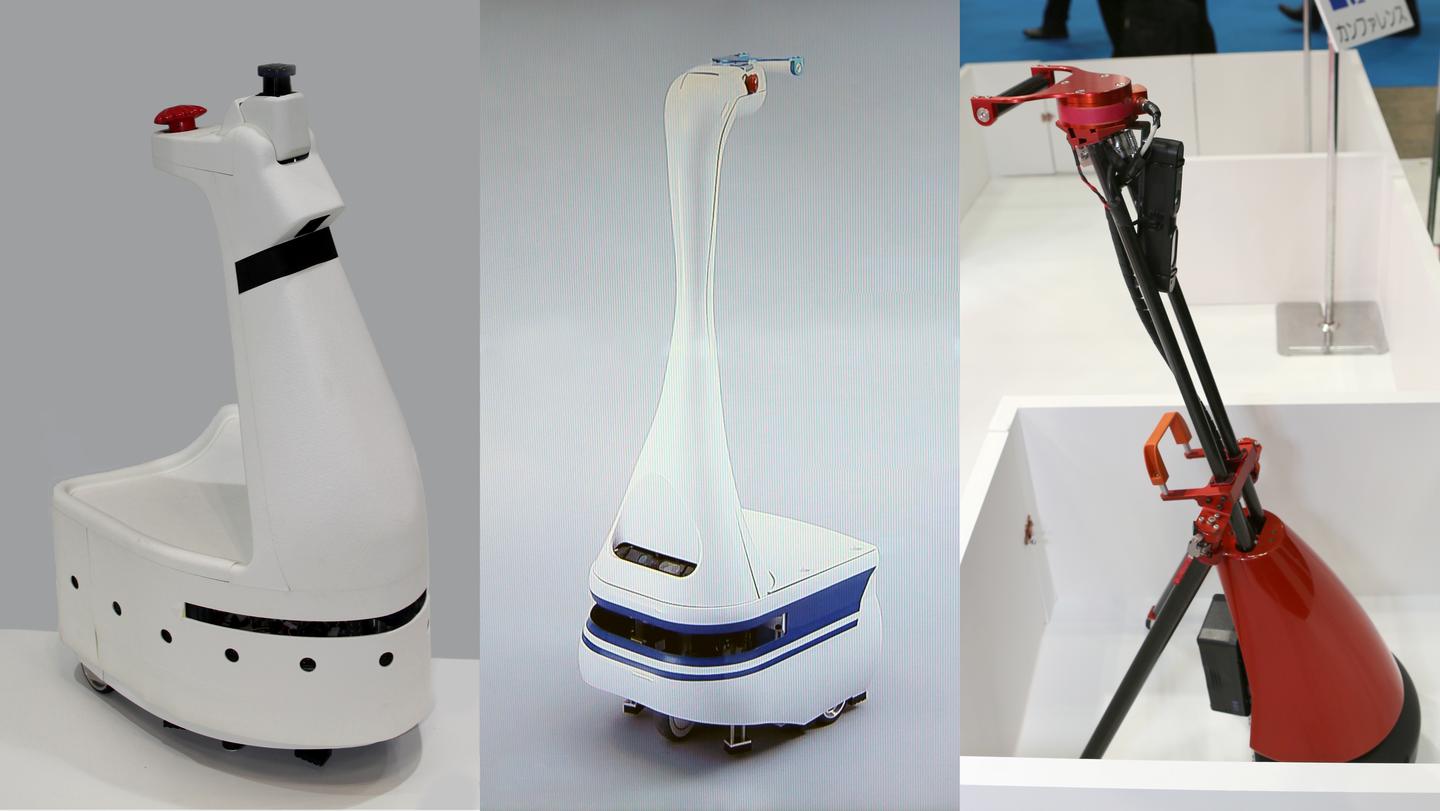
Companion robots to help with the loneliness of the elderly was near the top of the list for the creation of specific robotics, and the Japanese giant NSK first showed robots for the visual impaired at Irex in 2009. A 2007 Japanese Government study identified that visual impairment affected more than 1.64 million people in Japan and cost around JPY8785.4 billion (US$72.8 billion) across the economy, equivalent to 1.7 percent of Japan’s gross domestic product.
Community care for people with visual impairment was one of the largest components of this cost and with the Japanese population being one of the longest living and the oldest in the world, the development of guide robots makes a lot of sense, particularly considering that Japan will have commercialized its expertise by the time other countries need to support their aging populations.
Unitree’s $1600 Go2 Quadruped Robot gets embodied Artificial Intelligence
There are now a number of companies providing education, research and industry with suitable robotic platforms, with Boston Robotics the longest standing in this recent field. You can buy Boston Robotic’s Spot, the company’s state-of-the-art robotic quadruped for $74,500, but it comes with no relevant guide dog software, at least as yet.
The availability and continued rapid advancement of the requisite technologies once the market begins, suggests we’re going to have some very useful assistants in the near future, and just as we saw drone technology progress from DARPA to toy shops in a blink, robot dogs will almost certainly become a hotly contested marketplace in the near future … and the logical first specialization due to that massive latent demand is likely to be assistance robots for the impaired.
Just eight months ago we wrote about the insanely athletic $1,600 Go2 robot dog from Unitree adding a new GPT-powered conversation option and several other significant upgrades when it superseded the previous version, the $2,700 Go1 robot dog.
University of Glasgow’s Roboguide
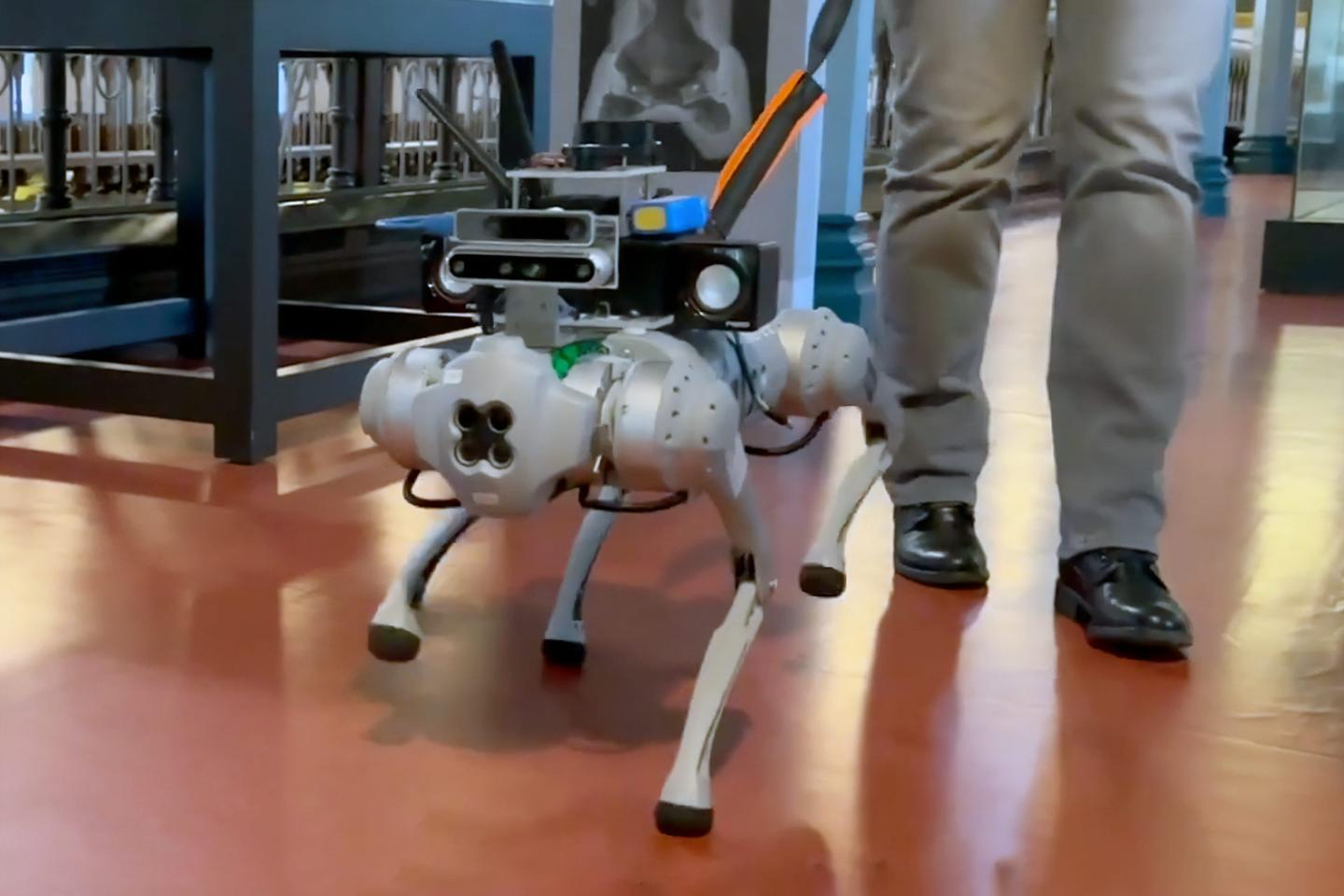
University of Glasgow
The University of Glasgow has been working with the Unitree G01 platform for quite some time now, specifically to develop guide dogs for blind and partially sighted people.
The platform for the project is Unitree’s USD $2,700 Go1 robot that weighs 12 kg (26.5 lb), stands 40 cm (16 in) tall, and is 70 cm (28 in) from nose to tail … or where they’d be if it was a real dog. Its aluminum chassis is armored with composite materials and it can carry more than half its own weight as payload, with between and an hour and two hours per charge, depending on how much energy it expends doing what you want it to do.
“One significant drawback of many current four-legged, two-legged and wheeled robots is that the technology which allows them to find their way around can limit their usefulness as assistants for the visually impaired,” said Dr Olaoluwa Popoola, of the University of Glasgow’s James Watt School of Engineering, the project lead.
“Robots which use GPS to navigate, for example, can perform well outdoors, but often struggle in indoor settings, where signal coverage can weaken. Others, which use cameras to ‘see’, are limited by line of sight, which makes it harder for them to safely guide people around objects or around bends.”
The RoboGuide system under development by the University of Glasgow takes the existing Unitree G01 robot and adds several technologies plus software that enable the robotic dog to better map and negotiate indoors.
Unitree’s $100,000 60 KG B2 Robot Dog
Don’t let the diminutive 12 kg size of the Unitree Go1 robot benchmark the ultimate potential of the system for you, as the aim is to develop a complete system that can be adapted for use with robots of all shapes and sizes to help blind and partially sighted people in a wide range of indoor situations.
Beyond the G01 and G02 lineage, Unitree also has a much larger dog-like robot series – the $100,000 60 kg Unitree B2 is pictured above (at right), and the company now also has a Humanoid robot. That means that the form factor of the host robot might evolve over time to offer different mobility solutions.
Source of Article
